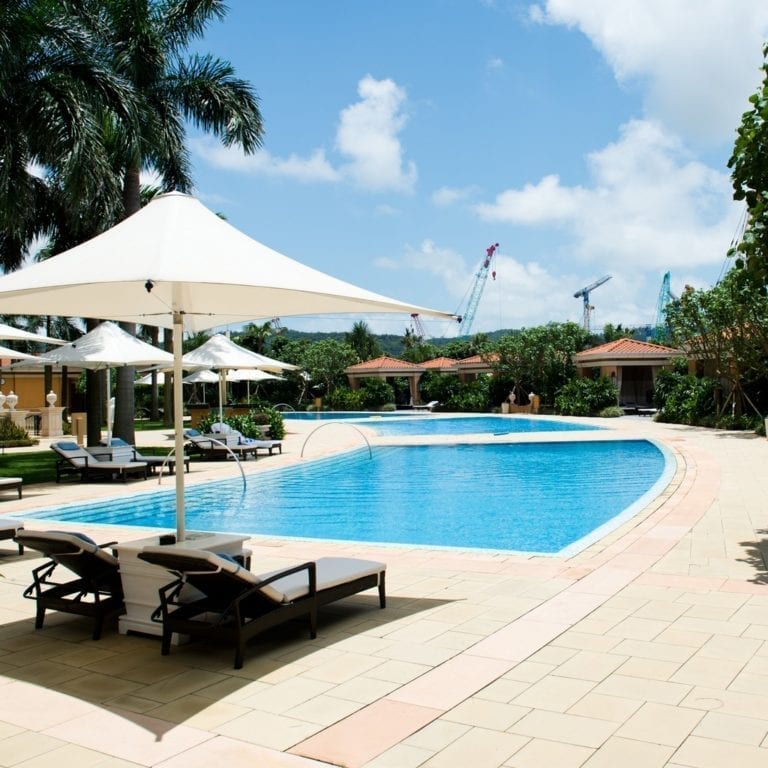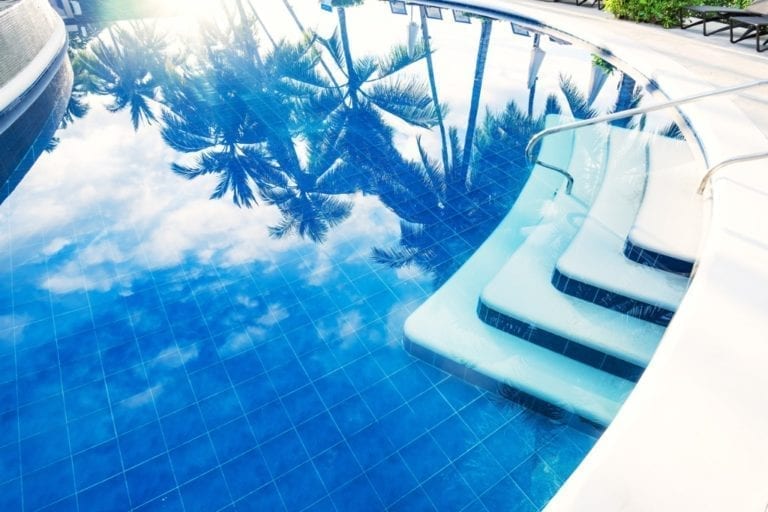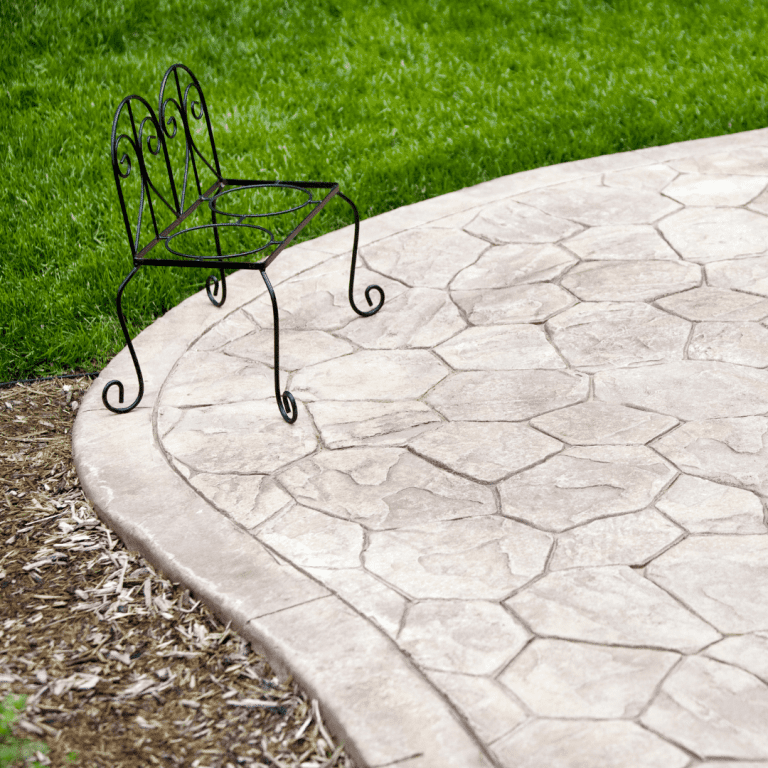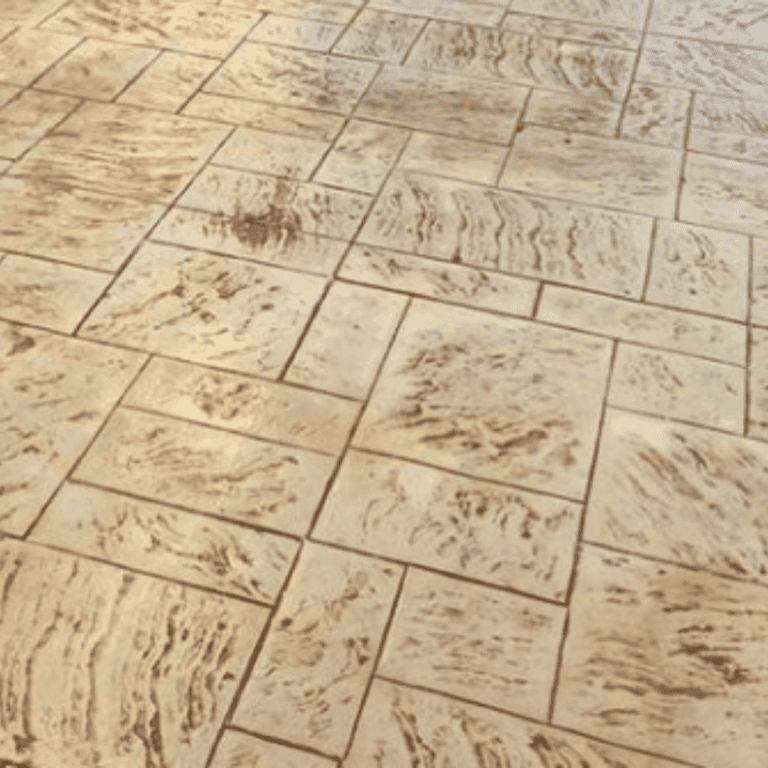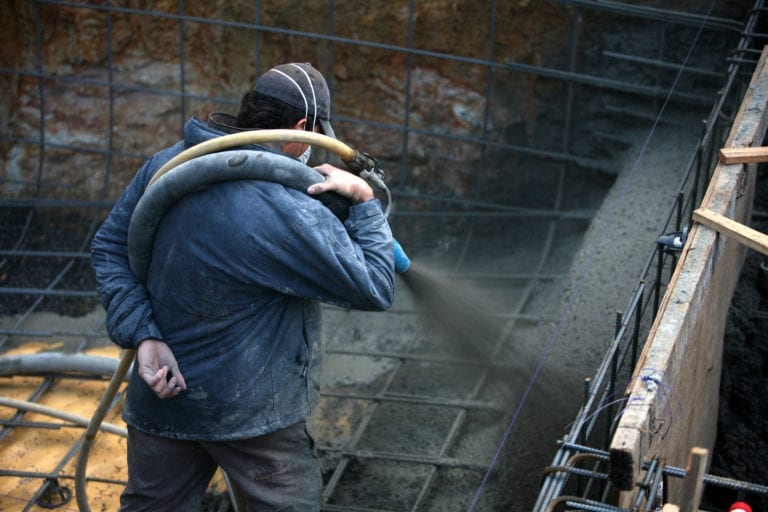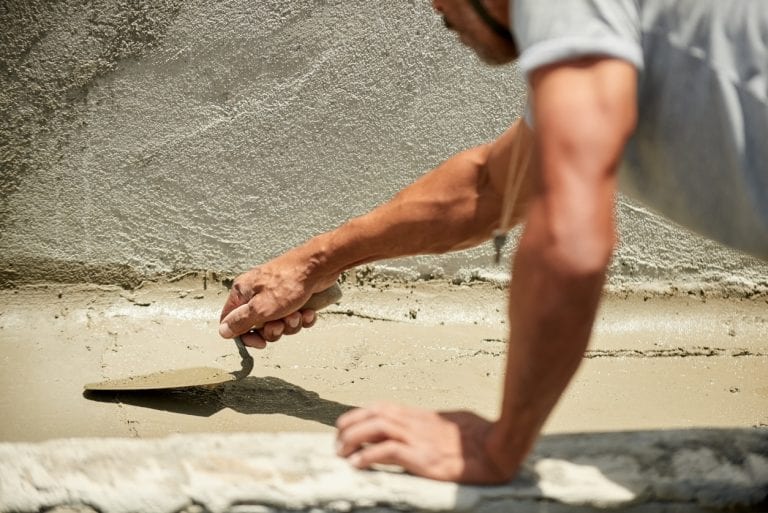Maintaining a clean and safe swimming experience in your commercial pool requires mastering the art of water chemistry. By understanding the principles of pool maintenance services, pool cleaning, and the use of commercial pool chemicals, you can ensure that your pool remains in optimal condition. In this comprehensive guide, we will explore the importance of pool water treatment and testing, as well as the key factors that contribute to pool water balance and quality.
Key Takeaways:
- Proper commercial pool service water chemistry is essential for maintaining a clean and safe swimming environment.
- Regular pool water testing and treatment are necessary to ensure pool water balance and quality.
- Commercial pool chemicals play a crucial role in killing bacteria, viruses, and algae, and preventing staining and cloudiness.
- Sanitizers, such as chlorine, bromine, and biguanide, are critical for pool water treatment.
- Dealing with algae growth requires regular brushing, proper chlorine levels, and the use of algaecides.
The Importance of Commercial Pool Service Water Chemistry
When it comes to maintaining a commercial pool, one of the most crucial aspects is maintaining the correct water balance. And pool chemicals play a vital role in achieving and maintaining the ideal water balance. They help kill bacteria, viruses, and algae, while also preventing staining and cloudiness. But why is water balance so important?
Water balance refers to the pH, alkalinity, and calcium hardness levels in the pool water. These factors directly impact the effectiveness of sanitizers and the overall water quality. If the balance is off, the sanitizers may not work as effectively, leading to potential health hazards. That’s why regular pool water testing is necessary to ensure the correct chemical levels are maintained.
To achieve the proper water balance, you need to monitor and adjust the levels of pool chemicals accordingly. pH levels should ideally be between 7.2 and 7.6. Alkalinity helps to stabilize the pH and should be maintained between 80 and 120 ppm. Calcium hardness prevents corrosion and should be kept between 200 and 400 ppm. By regularly testing and adjusting these levels, you can ensure that your commercial pool remains clean, safe, and inviting for swimmers.
The Importance of Pool Chemicals for Water Balance
| Chemical | Function | Recommended Level |
|---|---|---|
| Chlorine | Kills bacteria, viruses, and algae | 1-3 ppm |
| pH Increaser | Raises pH levels | Varies based on current pH |
| pH Decreaser | Reduces pH levels | Varies based on current pH |
| Alkalinity Increaser | Raises alkalinity levels | 80-120 ppm |
| Calcium Hardness Increaser | Raises calcium hardness levels | 200-400 ppm |
By understanding the importance of pool chemicals for water balance and conducting regular pool water testing, you can ensure that your commercial pool remains a safe and enjoyable place for swimmers. Remember to follow manufacturer guidelines and seek professional advice if needed to maintain the correct chemical levels and provide a clean and inviting swimming experience.
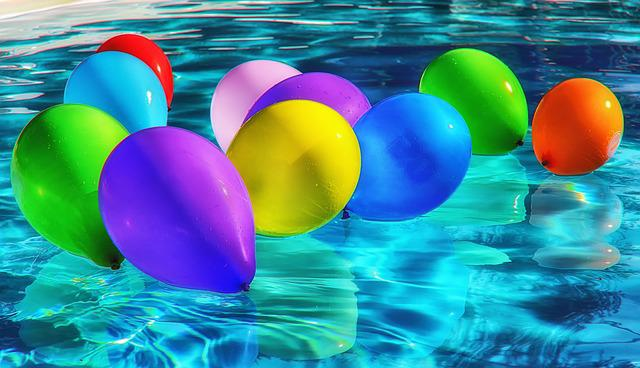
The Role of Sanitizers in Pool Water Treatment
Sanitizers play a crucial role in pool water treatment by eliminating harmful bacteria, viruses, and algae. The most commonly used sanitizer in commercial pools is chlorine. It is effective and affordable, making it a popular choice for pool owners. Chlorine can be added to the pool water in the form of granules or tablets. For outdoor pools, stabilized chlorine is recommended to prevent degradation from sunlight.
“Bromine is an alternative sanitizer that works by ionizing contaminants. It is often used in hot tubs and indoor pools.”
Bromine is another option for pool water treatment. It works by ionizing contaminants, making it effective in killing bacteria and algae. Bromine is often used in hot tubs and indoor pools. Unlike chlorine, bromine does not break down in sunlight, making it a suitable choice for pools with high sun exposure.
“Biguanide is a chlorine-free sanitizer that is milder on the skin and does not degrade in sunlight.”
For those looking for a chlorine-free alternative, biguanide can be used as a sanitizer. It is milder on the skin compared to chlorine and does not degrade in sunlight. Biguanide is a good option for individuals with sensitive skin or those who prefer a gentler sanitizer.
| Sanitizer | Advantages |
|---|---|
| Chlorine | Chlorine-free, milder on the skin |
| Bromine | Works in hot tubs, indoor pools |
| Biguanide | Chlorine-free, milder on skin |
In summary, sanitizers are vital for pool water treatment. Chlorine is the most commonly used sanitizer due to its effectiveness and affordability. Bromine and biguanide are alternative options with their own advantages. Choosing the right sanitizer for your commercial pool depends on factors such as sun exposure, personal preferences, and the type of pool being treated.

Dealing with Algae in Commercial Pools
Algae growth is a common problem in commercial pools and can be a nuisance to deal with. Regular pool maintenance and cleaning are crucial to prevent and remove algae from your pool. Here are some effective strategies to tackle algae issues in your commercial pool:
1. Brush and Scrub:
Regularly brush and scrub the walls and floors of your pool to remove any visible algae. This physical agitation helps to dislodge the algae and prevent it from taking root and spreading further.
2. Maintain Proper Chlorine Levels:
Keeping the chlorine levels in your pool within the recommended range is essential for preventing algae growth. Chlorine acts as a sanitizer and helps to inhibit the growth of algae. Regularly test and adjust the chlorine levels to ensure they are adequate.
3. Shock Treatment:
In cases of severe algae infestation, a shock treatment is necessary. Shocking the pool involves adding a large dose of chlorine or pool shock to rapidly raise the chlorine levels and kill the algae. Follow the manufacturer’s instructions for proper dosage and application.
4. Algaecide Treatment:
Using algaecide regularly can help prevent algae from returning to your pool. Algaecides work by inhibiting the growth and reproduction of algae. Choose an algaecide that is appropriate for your specific type of algae and follow the instructions for application.
| Type of Algae | Treatment Approach |
|---|---|
| Green Algae | Brush, shock treatment, and regular algaecide use |
| Mustard Algae | Brush, shock treatment with specialized products for mustard algae, and regular algaecide use |
| Black Algae | Brush, aggressive shock treatment with specialized products for black algae, and regular algaecide use |
By implementing these strategies and staying proactive with your pool maintenance, you can effectively deal with and prevent algae growth in your commercial pool. Remember to regularly test the water, balance the chemical levels, and keep up with routine cleaning to help create a clean and inviting swimming environment for your patrons.
Certification Courses for Pool Professionals
As a pool professional, investing in certification courses can greatly enhance your skills and knowledge in pool maintenance and service. These courses cover a wide range of topics including safety protocols, pool circulation and filtration systems, water quality management, electrical systems, and customer service. By completing these courses, you will gain a recognized credential in the pool industry, making you a valuable asset to employers and clients alike.
One of the key benefits of certification courses is the in-depth understanding you will gain about pool maintenance. You will learn about the various types of pool chemicals, their functions, and how to properly test and balance the chemical levels in a pool. This knowledge is crucial for maintaining optimal water balance and quality, ensuring a safe and enjoyable swimming experience for pool users.
Furthermore, certification courses also provide valuable insights into pool service, such as troubleshooting common pool problems, understanding pool equipment and repairs, and effective communication with customers. By enhancing your customer service skills, you can provide exceptional service and build strong relationships with clients, leading to repeat business and positive referrals.
Types of Certification Courses
Certification courses for pool professionals come in various levels and specializations. Some popular courses include:
- Basic Pool Maintenance Certification
- Advanced Pool Service and Repair Certification
- Commercial Pool Operations Certification
- Water Chemistry Specialist Certification
Each course offers targeted knowledge and practical training in specific areas of pool maintenance and service. Choosing the right certification course will depend on your current skill level and career goals.
| Certification Course | Duration | Topics Covered |
|---|---|---|
| Basic Pool Maintenance Certification | 2 days | Pool safety, water chemistry basics, equipment maintenance |
| Advanced Pool Service and Repair Certification | 1 week | Advanced troubleshooting, electrical systems, pump and filter repairs |
| Commercial Pool Operations Certification | 3 days | Commercial pool regulations, water quality management, staff supervision |
| Water Chemistry Specialist Certification | 4 days | Advanced water testing techniques, chemical balancing, algae prevention |
“Obtaining a certification in pool maintenance and service not only demonstrates your expertise but also opens up new opportunities in the industry. Clients and employers will have confidence in your skills, and you can command a higher salary or contract rates. Stay ahead of the competition by investing in your professional development through certification courses.”
Steps to Remove Algae in Swimming Pools
To effectively remove algae from swimming pools, a systematic approach is required. Follow these steps to ensure a thorough and successful algae removal process:
- Brush the walls and floor: Start by vigorously brushing the pool walls and floor to dislodge as much algae as possible. This physical agitation helps loosen the algae and makes it easier to eliminate.
- Balance the pH level: Maintaining the pH level between 7.2 and 7.6 is crucial for effective algae removal. Use a test kit to measure the pH level and make necessary adjustments using pH increaser or pH reducer products.
- Add chlorine-based pool shock: Next, add a chlorine-based pool shock according to the manufacturer’s instructions. The chlorine shock will kill the algae and prevent further growth. Ensure that the pool water is properly circulated to distribute the shock evenly.
- Run the filter system continuously: To aid in the removal of dead algae, run the pool’s filter system 24 hours a day. The filter helps to capture and remove the dead algae particles from the water.
- Repeat shock treatment if necessary: If the algae problem persists, additional doses of chlorine-based pool shock may be required. Monitor the water clarity and algae growth closely to determine the need for further treatment.
- Vacuum the pool and clean the filter: Once the algae has been killed, use a pool vacuum to remove the dead algae from the pool floor. Additionally, clean or backwash the pool filter to ensure optimal filtration efficiency.
- Test and balance the pool chemical levels: Finally, test the pool water and adjust the chemical levels as needed. Properly balanced pool chemicals help maintain a clean and safe swimming environment.
By following these steps and maintaining a regular pool maintenance routine, you can effectively remove algae from your swimming pool and ensure a refreshing swimming experience for all.
Remember, prevention is key to avoiding future algae growth. Regularly monitor and maintain proper water chemistry, keep the pool clean, and promptly address any imbalances or issues to prevent algae from taking hold.
Chlorine and Swimming Pool Algae
Chlorine plays a vital role in combating algae growth in swimming pools. As a powerful oxidizing agent, chlorine effectively kills bacteria and algae through a chemical reaction. Maintaining proper chlorine levels is crucial to prevent algae from flourishing in your pool. Regular testing and monitoring of chlorine levels will help ensure that the water remains free from algae and other contaminants.
“Chlorine is a tried and tested sanitizer that has been used in swimming pools for decades. Its ability to oxidize and destroy microorganisms, including algae, makes it an essential component of pool water treatment.” – Pool Maintenance Expert
Different types of algae require specific treatment approaches. Green algae, the most common type, can be successfully eliminated with shock treatments using chlorine. Mustard algae, which are more resistant, may require brushing and prolonged exposure to chlorine. Black algae, the most stubborn and difficult to eradicate, typically necessitate aggressive treatments along with persistent brushing. In addition to chlorine, copper-based algaecides and sodium bromide can also be used as alternative treatments to control algae growth in pools.
Comparative Table: Effectiveness of Algae Treatments
| Treatment | Effectiveness |
|---|---|
| Chlorine Shock Treatment | High |
| Copper-based Algaecides | Moderate |
| Sodium Bromide | Moderate |
Regular maintenance and sanitation practices, including the appropriate use of chlorine and other treatments, will help you keep your swimming pool free from algae and ensure a safe and enjoyable swimming experience for all.
Conclusion
Mastering commercial pool service water chemistry is crucial for maintaining a clean and safe swimming environment in commercial pools. Understanding the importance of pool chemicals, the role of sanitizers, and effective algae removal techniques can help ensure optimal water balance and quality. By following proper pool maintenance practices and regular testing, you can provide a pleasant swimming experience for your patrons.
Remember that pool chemicals play a vital role in maintaining water balance. They help kill bacteria, viruses, and algae, preventing staining and cloudiness. Balancing pH, alkalinity, and calcium hardness is essential for the effectiveness of sanitizers and overall water quality. Regular pool water testing is necessary to maintain the correct chemical levels.
Additionally, the role of sanitizers in pool water treatment cannot be overstated. Chlorine is the most commonly used sanitizer due to its effectiveness and affordability. It can be added in granule or tablet form and should be stabilized for outdoor pools. Bromine and biguanide are alternative sanitizers with their own unique advantages.
AAA Pool Maintenance, with over 50 years of expertise in pool and spa maintenance, construction, and repairs, is a trusted pool contracting company serving Camarillo and Ventura County. Their team of professional pool builders and subcontractors are skilled in pool renovation, design, and installation. Contact AAA Pool Maintenance at (805) 987-0975 to discuss your project and benefit from their reliable services.
To deal with algae growth, regular brushing, maintaining proper chlorine levels, and shock treatment of the pool are essential. Different types of algae require specific treatment approaches, and the use of algaecides can help prevent their return. Finally, pursuing certification courses in pool maintenance, service, and inspection can enhance your skills and knowledge in the industry, leading to better pool maintenance and service.


